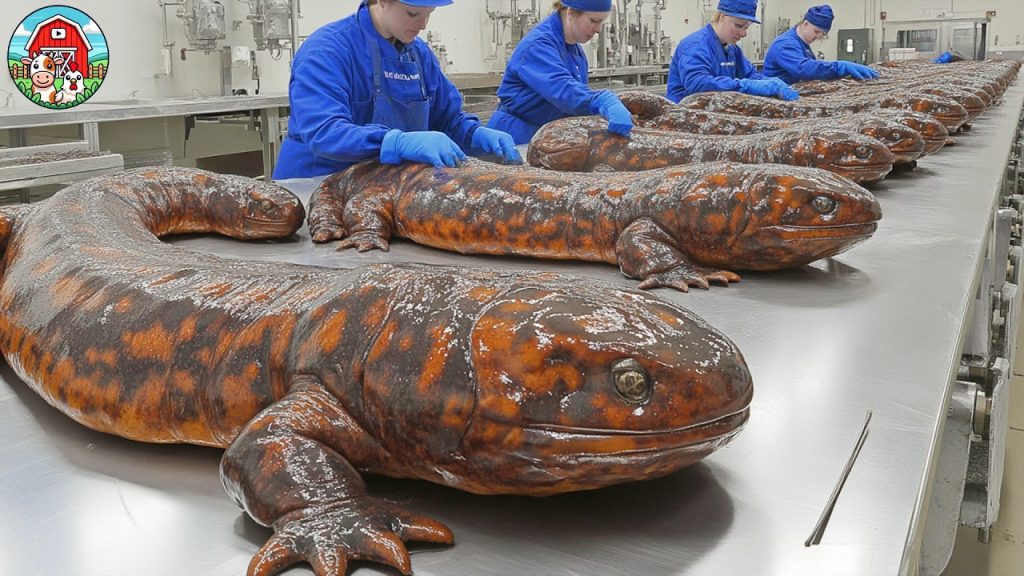
The Chinese giant salamander is a living fossil, having existed for over 170 million years. As the largest amphibian in the world, it can grow up to six feet long and live for decades. Found naturally in rocky mountain streams and lakes, these creatures breathe through their skin and are known for their unique vocalizations, which resemble a crying baby—earning them the nickname “infant fish” in Chinese.
The Rise of Salamander Farming
Due to the high demand for their meat and use in traditional medicine, salamander farming expanded rapidly in China in the 1970s. At one point, these creatures were selling for over $1,500 each. Today, farms use specially designed pools and tunnels to mimic their natural habitat. Clean, oxygen-rich water at controlled temperatures is essential, as salamanders stop feeding above 20°C and cannot survive temperatures above 35°C.
How Salamanders Are Raised
Salamanders rely on their sensory nodes rather than eyesight to navigate their surroundings. They have broad, flat heads, small lidless eyes, and wrinkled skin, typically dark brown with speckled patterns, although rare albino variations exist. These creatures reach adulthood in five to six years, with some reportedly living over 60 years in captivity.
Maintaining a clean environment is crucial, requiring frequent filtration to remove excess food and mucus. Their diet consists of worms, shrimp, fish, and even small chickens. Cannibalism is also observed among them.
Breeding and Growth
Salamanders breed in the summer, with females laying hundreds of eggs in hidden spots. Males guard the eggs, even consuming infected ones to protect the healthy batch. Farmers collect the eggs and place them in specialized tanks until they hatch. The larvae are initially three centimeters long, retaining external gills until they reach 20 centimeters in length. By three years of age, they are large enough to be moved into bigger enclosures.
Harvesting and Processing
Once salamanders reach market size, they are carefully collected and transported to weighing stations for documentation. Their meat, once a delicacy reserved for the wealthy, was believed to have medicinal benefits. While farmed salamanders have driven down the price, they remain a sought-after ingredient in soups and stews, sometimes enhanced with traditional herbs.
Though farming has helped reduce the pressure on wild populations, conservation efforts remain critical to protect this ancient species.



